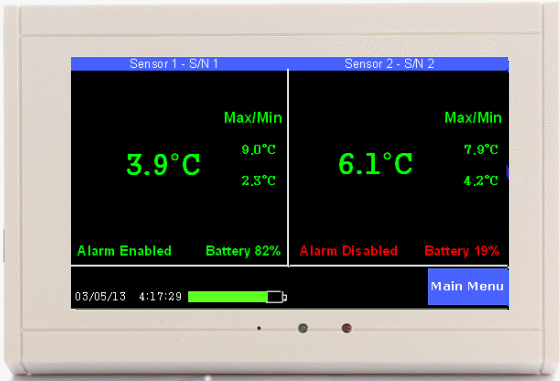
- Simple to setup and use
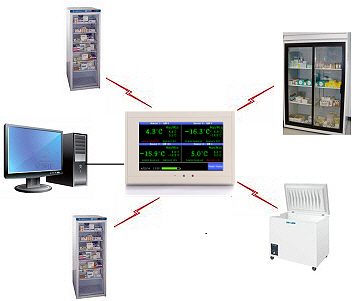
- Internal 72 hour backup battery
- Accurate sensors ±0.3°C
- Text, email or phone call alerts
- Free secure PC interface software
- Wired Ethernet connection
- Meets federal and state requirements
- Automatic temperature logging
- Monitors, logs and alarms four refrigerators or freezers
- Installed in over 1000 locations
 The TV2 Easy Freezer alarm not only send a text or email alert if the temperature gets too warm or cold for too long, it also logs all temperatures of each unit being monitored. An auto-dialer is also available to provide a phone call alert.
The TV2 Easy Freezer alarm not only send a text or email alert if the temperature gets too warm or cold for too long, it also logs all temperatures of each unit being monitored. An auto-dialer is also available to provide a phone call alert.
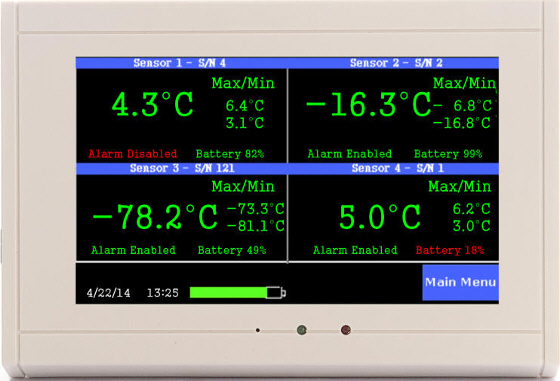
The TV2 Freezer Alarm can be used in health clinics, laboratories, hospitals, pediatricians offices, manufacturing plants, and even commercial kitchens to protect vaccines, medicines or other valuable inventory.
Its four temperature sensors take a snapshot of the temperature every 20 seconds and log the temperature every ten minutes so the user has a complete record of the operating temperatures. There is enough non-volatile memory to stores years of temperature history for each sensor. And if the temperature of a freezer or refrigerator gets too warm or wold for too long it can send a text, email or phone call alert. Nobody likes getting a call in the middle of the night but if the call prevents the loss of thousands of dollars worth of vaccines it is worth it.
Automatically logs all temperatures
The Easy Freezer alarm also logs every temperature every ten minutes so if an alarm does occur the user can call up a temperature history chart to see how long the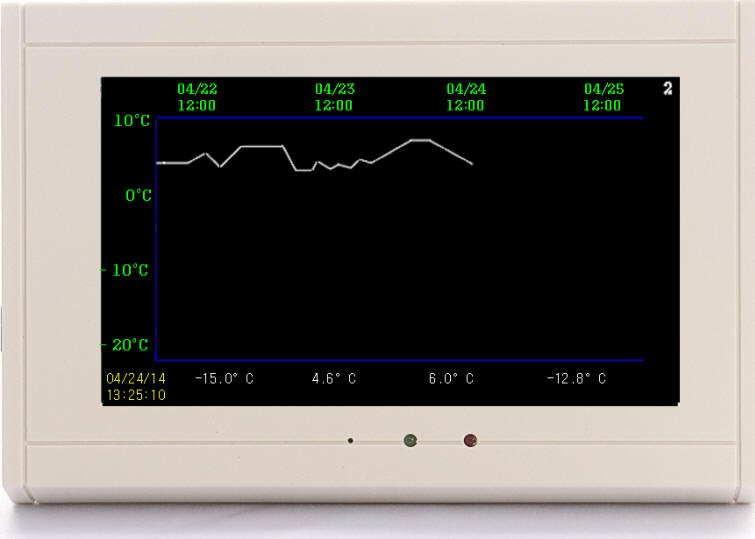 alarm lasted, when it began and what the temperature actually did. This is critical information since a sharp temperature spike is very different and has very different implications from a slow, long gradual rise in temperature. The chart is so easy to understand that every person will ‘get it’ and easily be able to interpret the readings. The chart is also very useful for establishing that a refrigerator or freezer has been operating properly over the last six months or year.
alarm lasted, when it began and what the temperature actually did. This is critical information since a sharp temperature spike is very different and has very different implications from a slow, long gradual rise in temperature. The chart is so easy to understand that every person will ‘get it’ and easily be able to interpret the readings. The chart is also very useful for establishing that a refrigerator or freezer has been operating properly over the last six months or year.
Many of our customers are unrelentingly audited by an industry or government agency to verify that they are operating according to regulations. Most auditors will ask how they know that the refrigerator has been operating at the correct temperature since the last audit. The temperature history chart can be viewed right on the display or printed out for a hard copy.
QuickCheck Display
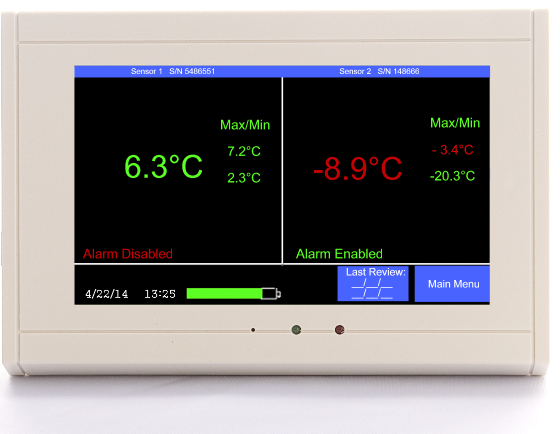
The Easy Freezer Alarm has another feature that really helps the user. The main display screen, QuickCheck, shows the current safety condition of the refrigerator or freezer. Knowing that a refrigerator is about is just as important or even more important that realizing that it has failed.
If the temperature gets too warm or cold the display will show that condition in Red. For example, in the display to the right shows that the freezer is in an unsafe condition at -8.9°C. An alarm might have not been sent yet but the freezer is too warm right now. If it cools down the temperature will again be shown in Green. The reason a freezer might be too warm but not have an alarm is that each alarm condition has a delay time to prevent false alarms. In this case the freezer will send an alarm only if the temperature stays above -10° for more than twenty minutes.
The Easy Freezer alarm can be used with wired or wireless sensors and can protect freezers designed from any temperature. Sensors for -80° freezers or even cryogenic freezers are available.
PC Data Display
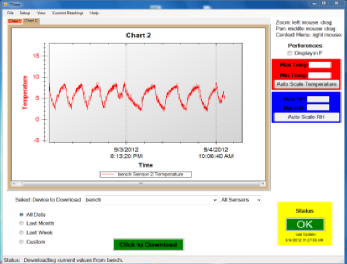
The TV2 Easy Freezer alarm comes with free secure software which can be used to automatically back up all data logged by the QuickCheck display. The Easy Freezer alarm can interface with the software by plugging the QuickCheck monitor into a USB port on a computer or plugging the monitor into a wired Ethernet hub on your Local Area Network. No matter how your get the Alarm talking to your computer once it is interfaced the software, TView, can request data, send text or email alerts when a temperature becomes unsafe, or print out a temperature history chart of the logged data.
